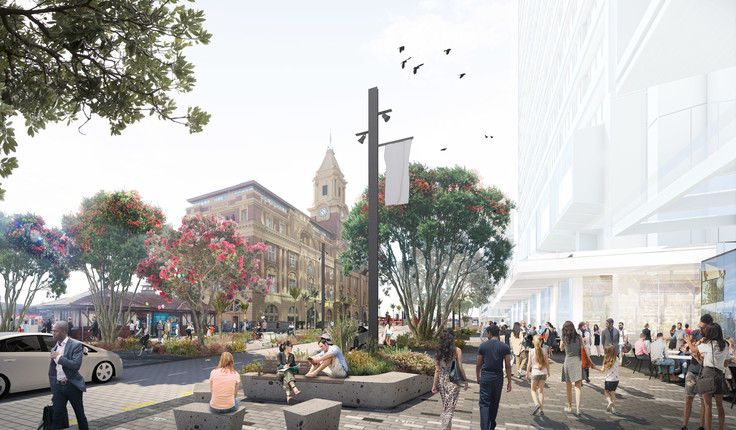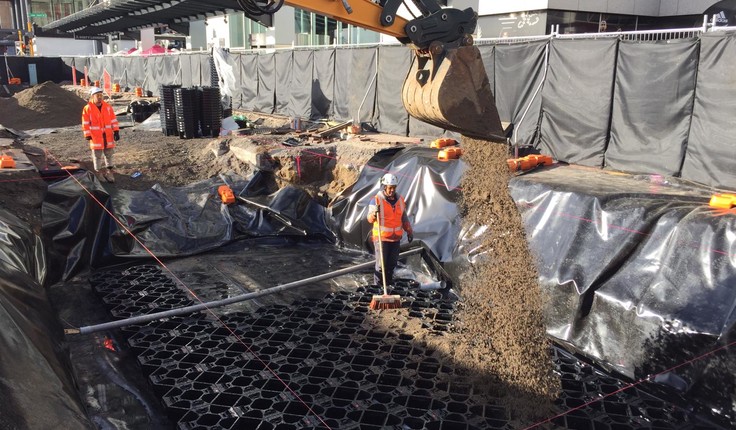News
Quay Street rain gardens - "unseen ecological hero"
Posted 22 08 2019
in News

LandLAB worked closely with mana whenua and Auckland Council
A series of specially designed gardens will form the centre piece of a revitalised Auckland Downtown Waterfront as part of the city’s 10-year Downtown Programme. Fifty new gardens - including 19 rain gardens - will be home to up to 200 new native trees as well as the 40 existing pōhutukawa trees (which have been relocated to Teal Park during construction).
LandLAB’s Henry Crothers says part of the studio’s design concept for Quay Street was to re-imagine the conventional reticulated stormwater network proposed and develop a more resilient and sustainable Water Sensitive Urban Design (WSUD) strategy, that celebrates the identity and ecology of Tamaki Makaurau but also maintains water quality in the Waitemata Harbour.
“Weaving a new coastal edge ecology into Quay Street is a key concept behind the transformation of Quay Street,” Crothers says. “The rain gardens, native planting palette and street tree planting work together to create a uniquely Tamaki waterfront avenue and destination at the heart of the city centre waterfront.”
LandLAB worked closely with mana whenua and Auckland Council to develop a plant palette informed by the coastal ecologies and landscapes of the Waitemata. The integration of the rain gardens supports Mana whenua values as well as showcasing a commitment to sustainability, innovation and design excellence, Crothers says.
Auckland Transport's Downtown Programme Director Eric van Essen says “rain gardens are an unseen ecological hero”.
“A rain garden is a sustainable and economical way of dealing with storm water as nature intended,” he says. “Not only do they help remove pollutants and slow down stormwater flows they recharge freshwater bodies and look attractive.

“Rain gardens also filter storm water through soil mix and plants which absorb and filter contaminants before it flows to surrounding ground, pipes, drains and streams, and eventually to the sea.”
The gardens will provide complete stormwater drainage coverage across the length of the enhancement programme.
Excavations for the rain gardens commenced mid-July.
“We are about half way through these works on the Southern Side and expect to have completed the in-ground structures (pits) by the end of August,” he says.
In early September 2019 surface construction works start on the rest of the Quay Street and the new rain gardens will be backfilled to allow the installation of new utility pits, chambers and lighting features.
New paving is expected start in late October/early November 2019 and progress through into early 2020.
The relocated trees, and new trees will arrive on site for planting between February and December 2020.
Share
19 Dec
Christmas break 2025

see you from 12 January
As we wrap up another big year, we’re taking a moment to pause, breathe, and enjoy a well-earned break. Meri …
18 Dec
President’s update

December 2025
Earlier this month I attended the Ngā Aho Māori Design Professionals Wānanga-ā-Tau at Te Aranga Marae in Flaxmere. Tuia Pito …
18 Dec
Awards 2026 update

An update as we warm up for the 2026 Awards kaupapa. Submissions will open in March and will run for …
Events calendar
Full 2026 calendar